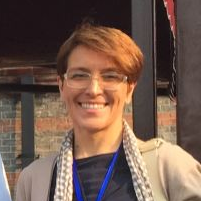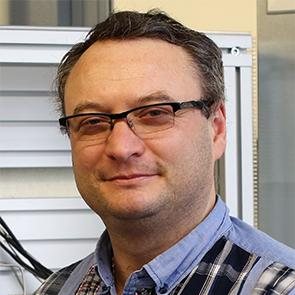Selected Papers from the MELPRO 2022
A special issue of Membranes (ISSN 2077-0375).
Deadline for manuscript submissions: closed (31 January 2023) | Viewed by 6589
Special Issue Editors
Interests: membrane science and engineering; membranes in artificial organs; integrated membrane processes; membrane preparation and transport phenomena in membranes; membrane distillation and membrane contactors; catalytic membrane and catalytic membrane reactors; desalination of brackish and saline water; salinity-gradient energy fuel cells
Special Issues, Collections and Topics in MDPI journals
Interests: molecular modeling of membranes and membrane operations; modeling of single gas and mixed gas separation; modeling of morphological properties of amorphous glassy membranes; membrane crystallization
Special Issues, Collections and Topics in MDPI journals
Interests: membrane separation processes; gas and vapor separation; pervaporation; pertraction; chiral membranes; new trends in membrane applications
Special Issues, Collections and Topics in MDPI journals
Interests: electrodialysis; electro deionization; industrial wastewater treatment; zero liquid discharge; hybrid processes; integrated membrane processes; high purity water; ultrapure water; gas membrane separation; diffusion dialysis; acid recycling; glycol purification
Special Issues, Collections and Topics in MDPI journals
Special Issue Information
Dear Colleagues,
It is our pleasure to invite you to the MELPRO 2022 conference, which will be held in Prague, Czech Republic. Based on the targets of the MELPRO 2022 conference, the structure of the topics was assembled, as shown below. The conference topics include the following:
- New membrane materials;
- Gas and vapor separation;
- Pressure-driven membrane processes;
- Electrochemical membrane processes;
- Membrane systems in water treatment, biotechnology and biomedical applications;
- Membrane operations in process engineering;
- Modelling and simulation of membrane systems;
- General session and new trends;
- Membrane systems in the mining industry;
- New trends in membrane applications.
This Special Issue includes selected papers presented at the MELPRO 2022 conference. On behalf of the organizing committee, we would like to cordially invite you to join us. Participants of the conference are cordially invited to contribute original research papers or reviews to this Special Issue of Membranes.
Dates & Deadlines
|
July 10, 2022 |
Abstract submission deadline |
|
July 29, 2022 |
Notification of abstract acceptance |
|
August 6, 2022 |
Early registration deadline |
|
September 18, 2022 |
The conference begins! |
We hope that you will have a technically rewarding experience, and use this occasion to meet old friends and make many new ones. Do not miss the opportunity to explore Prague and the Czech Republic.
Prof. Dr. Enrico Drioli
Dr. Elena Tocci
Dr. Pavel Izák
Dr. Lubos Novak
Guest Editors
Manuscript Submission Information
Manuscripts should be submitted online at www.mdpi.com by registering and logging in to this website. Once you are registered, click here to go to the submission form. Manuscripts can be submitted until the deadline. All submissions that pass pre-check are peer-reviewed. Accepted papers will be published continuously in the journal (as soon as accepted) and will be listed together on the special issue website. Research articles, review articles as well as short communications are invited. For planned papers, a title and short abstract (about 100 words) can be sent to the Editorial Office for announcement on this website.
Submitted manuscripts should not have been published previously, nor be under consideration for publication elsewhere (except conference proceedings papers). All manuscripts are thoroughly refereed through a single-blind peer-review process. A guide for authors and other relevant information for submission of manuscripts is available on the Instructions for Authors page. Membranes is an international peer-reviewed open access monthly journal published by MDPI.
Please visit the Instructions for Authors page before submitting a manuscript. The Article Processing Charge (APC) for publication in this open access journal is 2700 CHF (Swiss Francs). Submitted papers should be well formatted and use good English. Authors may use MDPI's English editing service prior to publication or during author revisions.









